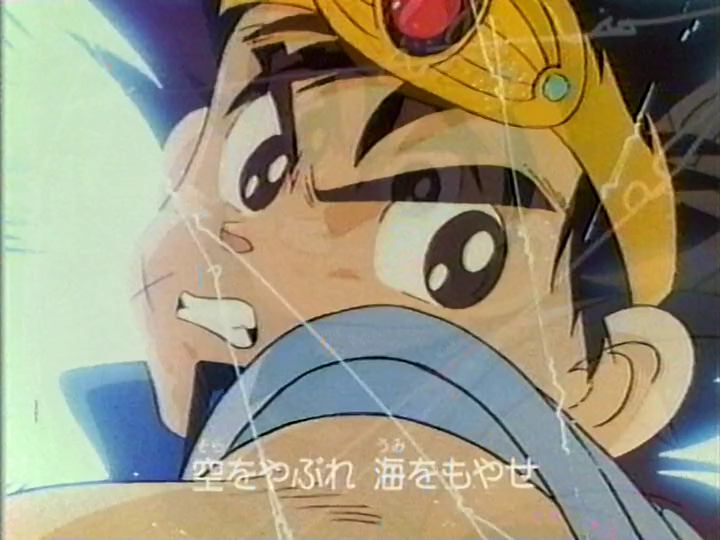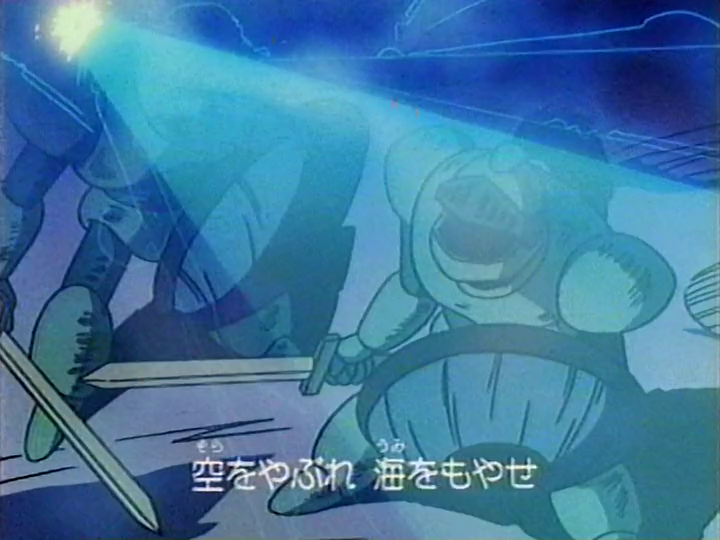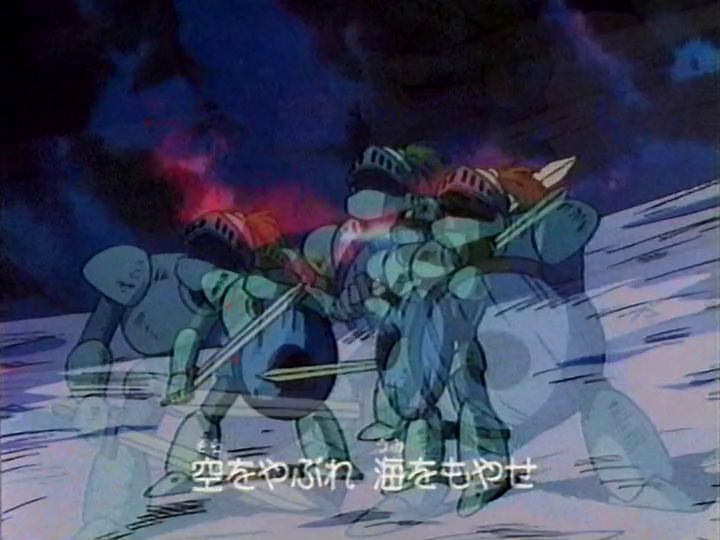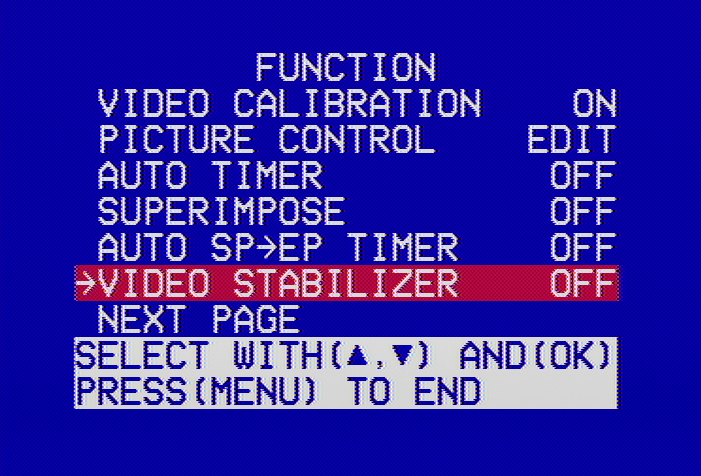Hello everyone. Sorry for my bad english.
I have some japanese VHS tapes I want to digitize at the highest possible quality.
I have an USA JVC HR-S3900 S-VHS and Panasonic DMR-ES10 DVD player as TBC pass through. I am using Avermedia CE310B capture card.
I use S-Video to send video from S-VHS to DMR-ES10 and DMR-ES10 to capture card, and I'm using Virtual Dub as capture software.
Video quality is very good but it is interlaced. I'm using QTGMC as deinterlacer and it works pretty well, but the video has like ghosting effect. I assume I won't get a video like it was native progressive but I think there must be another way to get better video.
I have read composite and S-Video outputs interlaced video, and components can output progressive video. DMR-ES10 has component video output. I have connected it to my TV and it looks very good, but it is also true that televisions deinterlace video automatically (on info figures "720x480 60hz"). When VHS is playing looks progressive video, but when I stop the tape, I feel like last 2 frames were interlaced.
I'm sure DMR-ES10 takes interlaced video from S-VHS. My doubt: Is DMR-ES10 outputting progressive video and my TV isn't deinterlacing? In this case I would buy a capture card with components input. Or is my DMR-ES10 outputting interlaced video and my TV is deinterlacing? There is an option in DMR-ES10 settings to configure progressive video output; does it mean it is converting interlace input video to progressive output video or it means it won't add another interlacing but will keep the original interlacing?
Thank you so much!
Try StreamFab Downloader and download from Netflix, Amazon, Youtube! Or Try DVDFab and copy Blu-rays! or rip iTunes movies!
+ Reply to Thread
Results 1 to 16 of 16
Thread
-
-
I thing posting a short sample of the problem area would help.
-
Yeah, you are right.
Raw video sample: Link
I'm using this sample (I'm newbie).
AviSource("C:\15.avi",audio=true)
ConvertToYV12(interlaced=true)
AssumeTFF()
tcomb().bifrost()
QTGMC(Preset="slower", SubPel=2, Sourcematch=3, Lossless=2).SelectEven().TDecimate()
crop(6, 0, -10, -8).Spline64Resize(720,540)
And there some problematic frame samples:




-
The video is full of blending artifacts. Even worse, at times only parts of the field (top vs. bottom) is blended. You need to sort out whether the problem is in the source or somewhere along the capture chain.
Adjacent fields after simple Bob():
I suspect the problem is on the tape as the titles overlay isn't blended and moving, only the background image.
Normally with telecined film like this you would IVTC rather than deinterlace. But if the blending artifacts are on the tape you can clean them up with SRestore(frate=23.976) after QTGMC(). TFM().SRestore(frate=23.976) might work too.
Also, make sure the noise reduction filter of the ES10 is turned off. That causes some ghosting too.
One last thing to consider: shots, especially in opening credits, are often sped up or slowed down after being telecined, using field blending. You may not be able to entirely eliminate those.Last edited by jagabo; 30th Jul 2018 at 17:05.
-
Thank you so much for your answer.
I have recorded a new short video connecting S-VHS directly to capture card, without DMR-ES10, to discard that DMR as trouble. Link. I have tried SRestore in this new video and there is blending.
This is a short video of the begining of the episode. Link. There is blending too.
This is my S-VHS configuration:


If I turn on stabilizer option, applies a strange interlacing. Link
EDIT: There are rips on internet without blending, so I assume tapes are right.Last edited by animefreak; 30th Jul 2018 at 17:53.
-
Most likely the blending is on the tape. Try another tape. Something completely different.
Make sure your S-VHS deck and capture card aren't applying noise reduction filters. I seem to recall that on JVC S-VHS decks the TBC and NR filters are tied together. So it's none or both. -
I'm doing different tests but none is as it should be.
I have 3 VCR:- JVC HR-S3900U S-VHS. NTSC. I bought it from USA so it is NTSC but no japanese.
- Panasonic NV-FS200 -SVHS. PAL. Has NTSC playback (converts to PAL60).
- LG 3850R-Z243E VHS. PAL. Has NTSC playback (converts to PAL60).
I have 3 capture cards:- AVerMedia H788 Bravo Hybrid. Supports NTSC_M, NTSC_M_J, NTSC_433 and PAL60.
- Avermedia CE310B. Supports NTSC_M.
- Avermedia H831 USB. Supports NTSC_M.
I've been trying different combinations between them but none do it well.
I'm sure tapes are well because there are low quality raw videos on internet without blending issue. I can't figure where is the issue, I'm doubting between S-VHS and capture card. I'm willing to purchase another capture card or japanese S-VHS, but I have to think about it well because it would be an important outlay and I don't want it to be useless. I wanna try a native japanese S-VHS because I've read USA NTSC and japanese NTSC aren't exactly the same. Would you try it or would you try buying another capture card? Which capture card would you use? I am thinking about AVerMedia H727.Last edited by animefreak; 31st Jul 2018 at 10:25.
-
Why do you think they came from the same VHS release? There were likely many releases of that series on VHS, TV, etc.
It's almost certainly the tape. The problem in post #4 is definitely on the tape. There's no way a problem in the VCR or capture device could cause the background image to shift/blend without also doing the same to the foreground text. The shift/blend occurred before the text was overlaid. Which means it occurred before the VHS tape was recorded.
I doubt it too. And this is so trivial for you to confirm: try a different tape. Not another tape from the same series (it may have the same problem), something completely different.
The only difference is the output levels. North America analog video has 7.5 IRE setup, Japanese analog doesn't. -
I have 25 tapes of this series. Those are all the NTSC tapes I've.
I'm trying PAL tapes on LG PAL VCR and there isn't any blending, which leads me to discard capture card. Link Star Trek sample
I'm discarding tapes because there only exists one release and I guess all the tapes are identical. There is a sample without blending issue. Youtube link. That leads me to think there is some way to deinterlace properly.
EDIT: Maybe you are right and it is tape's fault.
There are some WMVs on internet. The first 12 episodes don't have blending; episodes 13-46 actually have blending. The first 12 chapters lead me to think there must be a way to deinterlace properly. But I've realized something. The series has 46 episodes and has been released only in VHS once. Three days ago I heard that in 2007 Toei (company author of the series) created a new master and broadcasted the series in its pay per view channel. Maybe someone recorded the first 12 episodes from this channel and the other episodes have been recorded from VHS. That makes sense...Last edited by animefreak; 31st Jul 2018 at 12:25.
-
-
-
Mystery solved?
You can still use the QTGMC, SRestore sequence to remove a lot of the blending. Episodes without blending should probably use TMF().TDecimate() instead. -
-
I was looking on Google for another anime deinterlacers and I've found those threads. Link 1 and Link 2. I see I'm not the first person who is dealing with these tapes and seems you have dealed with this series before (for the bad guys, no, I'm not him). I see he had blending issues too. Seems tapes are the culprits. I'm about to accept it, but first I'd like you to take a look at this video. This is the first episode from an anonymous author. Trying to make sense of it I deduced that it would be captured from a digital broadcast of the new master, but if you take a look at 6:40, you can see a typical VHS issue, so I guess it is digitized from VHS tapes!
This is annoying
EDIT: I was digitizing without compressing video and I see you recommended Lagarith. Thanks to this manual I got 21,1 GBs video from 51,6 original video. That was great! And now meGUI renders preview almost instantly! Has it exactly the same quality? I am going to delete the original video. Can I use Lagarith directly to capture or may I capture uncompressed and encode after?Last edited by animefreak; 2nd Aug 2018 at 14:09.
-
HuffYUV used to be the favorite lossless codec for capture because it was very fast. The others are slower but compress a little more and modern computers are fast for them. Lagarith, UT Video Codec, x264 in lossless mode, etc.
Similar Threads
-
Highest Quality Video Editing
By lomaidala in forum EditingReplies: 70Last Post: 25th Jul 2023, 17:55 -
record quality drop after digitizing with Video DVR and honestech HD DVR
By andrei186 in forum CapturingReplies: 1Last Post: 30th Apr 2016, 20:25 -
Capturing PAL at highest quality possible
By luckyo in forum CapturingReplies: 5Last Post: 4th Nov 2015, 07:27 -
Highest quality DVD ripper
By dking023 in forum DVD RippingReplies: 5Last Post: 25th Aug 2015, 08:02 -
The best settings with Ripbot ? (Highest Quality)
By Eyhou in forum Newbie / General discussionsReplies: 9Last Post: 14th Jan 2015, 14:29



 Quote
Quote



